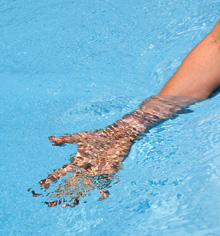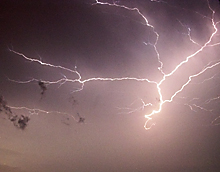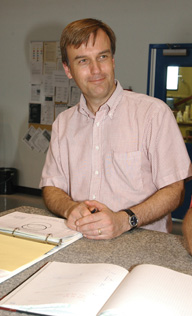 |
Wednesday, July 19, 2006 |
|
Wednesday, July 19
Thursday, July 20
Click here for a full calendar with links to additional information. |
|
Extended Forecast |
Secon Level 3 |
|
Wednesday, July 20 -Vegetable Beef -Fish & Chips -Salmon w/Lemon Pepper -Country Fried Steak w/Pepper Gravy -Beef & Cheddar Panini w/Sauteed Onions -Assorted Slice Pizza -Cavatappi Pasta w/Italian Sausage & Tomato Ragu The Wilson Hall Cafe accepts Visa, Master Card, Discover and American Express. |
|
Wednesday, July 19 Lunch -Marinated Flank Steak w/Mushrooms and Pea Pods -Jasmine Rice -Lemon Cheesecake
Thursday, July 20 |
| Fermilab Today is online at: http://www.fnal.gov/today/ Send comments and suggestions to today@fnal.gov Fermilab Today archive Hurricane Relief Page Fermilab Today PDF Version Fermilab Result of the Week archive Fermilab Safety Tip of the Week archive Linear Collider News archive Fermilab Today classifieds Subscribe/Unsubscribe to |
|
|
CBS News,
July 18, 2006:
New Proton Therapy Center Opens in Houston Knees bent and hands above his head, Francis Maloy lay on his back on a narrow, metallic table inside a white chamber, waiting for a giant wheel-like device to bombard the tumor in his chest with protons. "I had never heard of proton therapy. The last time I heard about protons I was in college taking physics," said Maloy, a 68-year-old retired Army colonel from Stuart, Fla., just before the procedure.
Maloy, who has advanced lung cancer, is one of the first patients being treated at the University of Texas M.D. Anderson Cancer Center's new $125 million Proton Therapy Center.
|
| Bright people, bright ideas | ||
Every Wednesday, Fermilab Today alternates letters from the eight division and section heads. In today's issue, Particle Physics Division head Jim Strait outlines contributions to new experiments and R&D efforts.
Some ideas have led to new experiments, which are moving through the approval process and into construction. SciBooNE and MINERvA will make precision neutrino scattering measurement in the Booster and NuMI neutrino beams. NOvA will greatly extend our reach in neutrino oscillation measurements. The Dark Energy Survey aims at understanding the dark energy that is driving the accelerating expansion of the universe. An upgrade to the Cryogenic Dark Matter Search, currently operating in the Soudan Mine, will substantially expand its sensitivity for direct detection of dark matter. R&D on new technologies holds promise to provide new tools for discoveries and precision measurements beyond our current capabilities. Fermilab engineers and physicists are leading in the development of "3-D" pixel detectors for the ILC, which should result in much thinner devices than the current generation of pixels. A growing collaboration, involving Fermilab and several universities, is carrying out R&D at a massive liquid Argon Time Projection Chamber for the next generation of neutrino experiments. Led by one of our Wilson Fellows, Fermilab and the University of Chicago are collaborating on the development of a meta-stable, continuously-active, room-temperature bubble chamber that holds the promise of being a cost-effective route to a very massive, and therefore very sensitive dark-matter detector. These new initiatives illustrate the cleverness and drive of our scientific and technical staff, and they are helping to lay the groundwork for a continued vital and diverse scientific program in the years to come. |
|
East entrance to close July 29 On Saturday, July 29, the Batavia Road east entrance to will close for road seal coating and striping. The entrance will be reopened Sunday morning, July 30, at 6:00 a.m. The bicycle path will remain open during this period.
Fermilab Barnstormers today
Professional Development Schedule:
July 18: Introduction to LabVIEW
|


